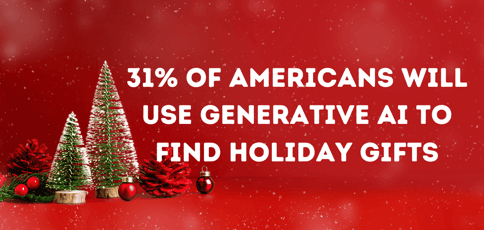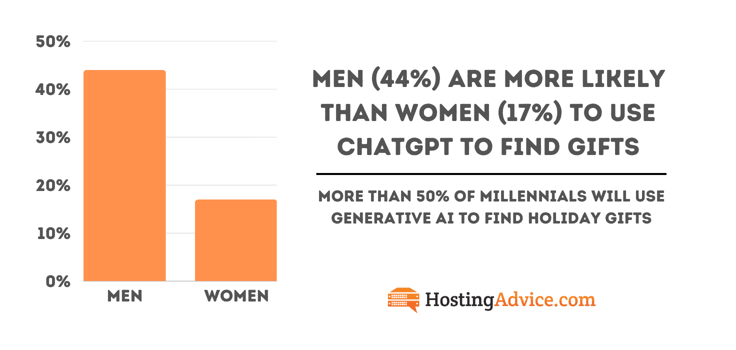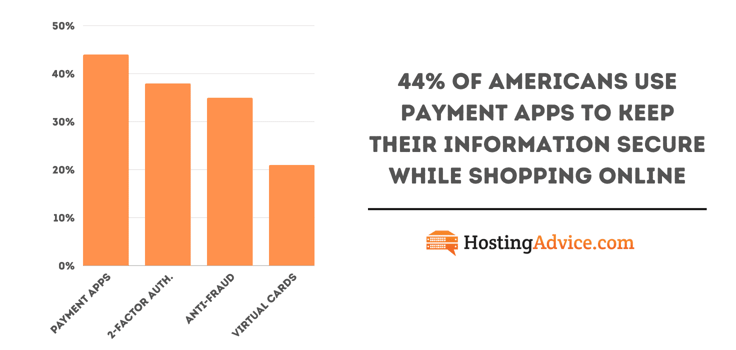
HostingAdvice survey reports millennials lead the majority of the 36% who trust ChatGPT with their holiday gift information.
By and large, Americans view generative AI as a helpful and engaging way to enhance their online shopping experience. Tools like ChatGPT help remove the guesswork out of holiday gift-giving. Our recent survey of more than 1,000 US adults revealed that to be the case for this holiday shopping season.
Men (44%) Are More Likely Than Women (17%) to Use ChatGPT to Find Gifts
The new holiday shopping survey reports that nearly 1 in 3 Americans (31%) surveyed said they will be using ChatGPT or similar AI bots to help them find their holiday gifts this year. That number includes 44% of male respondents who say they plan to use generative AI tools to help them find gifts, versus only 17% of females saying they will do so. When broken down by age groups, millennials look to be the core users of ChatGPT-type technology.

Broken down by age, those who said they will use generative AI tools to help them find gifts include:
- 18-24: 38%
- 25-34: 52%
- 35-44: 54%
- 45-54: 24%
- 55+: less than 10%
In ChatGPT We Trust?
Perhaps more revealing is that more than one-third of Americans (36%) surveyed said they would trust that their information would remain private when using ChatGPT or other AI bots to help them find holiday gifts. Almost half of males (48%) surveyed said they trust the software to maintain their privacy while using ChatGPT versus only 25% of surveyed females who said the same.
Breaking trust down by age group, millennials again look to be the core users who trust generative AI technology the most:
- 18-24: 46%
- 25-34: 55%
- 35-44: 58%
- 45-54: 31%
- 55+: less than 15%
44% of Consumers Rely on Payment Apps to Keep Their Data Safe
Leaked personal information is a real risk for every online holiday shopper, but there are smart ways to lower the risks of identity theft and fraud. The survey found that nearly half of Americans (44%) surveyed are using payment apps, such as PayPal and Apple Pay, as their top tool to protect financial data when making purchases online. Additionally:
- 38% will use two-factor authentication
- 35% will install anti-fraud protection
- 21% will use virtual cards to buy their gifts this year

Ensuring Your Online Privacy While Using Generative AI
The favorable use of generative AI tools to help consumers find assistance online is encouraging. While nearly two-thirds of respondents expressed some trust issues, a number of other useful tools are available to help online shoppers protect their privacy and security, such as browser extensions and VPNs.
Rest assured, if you use generative AI tools such as ChatGPT, cybersecurity professionals are doing everything they can to maintain an acceptable level of privacy. ChatGPT’s parent company OpenAI uses the latest encryption standards to protect your information at rest and in transit. It also ensures that only you can access your chat history, so you don’t have to worry about prying eyes. However, no system is perfect.
You should follow these best practices when using generative AI tools:
- Only provide the minimum amount of data necessary to use the platform
- Avoid typing personal details into the chat
- Never provide your financial or banking information to a chatbot
- Know your privacy rights and review OpenAI’s privacy policy
There’s no way to achieve 100% protection from hackers and malware, but practicing online safety is a fantastic step to protect yourself when using generative AI.
Survey Methodology
A national online survey of 1,036 U.S. consumers, ages 18 and over, was conducted by Propeller Insights on behalf of HostingAdvice in October 2023. Survey responses were nationally representative of the U.S. population for age, gender, region, and ethnicity. The maximum margin of sampling error was +/- 3 percentage points with a 95% level of confidence.


